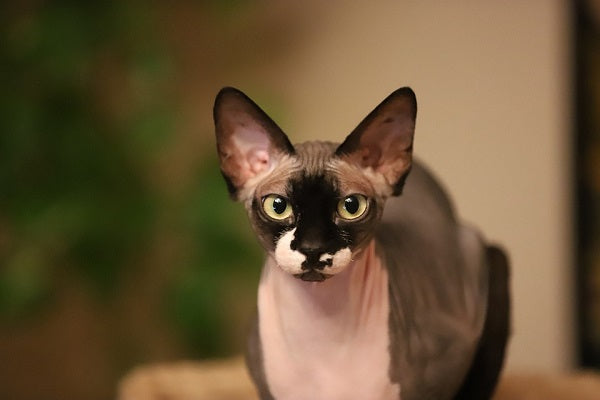She is elegant, cuddly, extravagant – and mostly naked: The Peterbald from Russia is one of the Sphinx breeds and is currently the youngest among them. The animals combine grace and exclusivity with an endearing and unproblematic character. However, some special features must be observed when keeping pedigree animals with little or no hair. The extra effort is worth it: the bald cat is an incomparable pet.
Peterbald: character
If you have a Peterbald cat as a roommate, you will never be alone again. These special velvet paws are extremely affectionate, people-related, good-natured, and friendly, at the same time clever and extroverted. To satisfy their curiosity, they follow their human wherever they go.
To some extent, a Peterbald will even attempt to please its owner by showing him unsolicited tricks it has learned. When that’s not enough to get the attention she deserves, she raises her powerful voice. Clearly: Peterbald likes to be the center of attention. She usually lives peacefully with other cats and pets; she is also an excellent companion for families with children.
Keeping and care of the Peterbald

Due to the missing or thin fur, the Peterbald is more susceptible to the weather and sunburn. For this reason, she should live as an indoor cat – ideally with access to a secured balcony. Since the animals do not produce any sebum, you should wipe off hairless specimens with a soft cloth every day. (By the way: the haptics of such a cat are similar to those of a horse’s nose.) For Peterbalds with fur, occasional grooming with a massage glove or a soft brush is sufficient.
The energy and fluid requirements of a Peterbald are higher than those of a haired cat. She doesn’t need any special food, but a slightly larger amount. Check with the breeder or vet for appropriate servings.
Even as indoor cats, Peterbalds have a pronounced urge to move. If you choose such a velvet paw, you should have enough space and plenty of climbing opportunities. The clever cats appreciate intelligence and fumbling toys.
Colors of the Peterbald
The Peterbald is a so-called naked cat. Kittens are sometimes born with a sparse coat, but this does not necessarily remain. In the case of hairy animals, a distinction is made between down (quite short and thin), velor (velvety), and brush (dense, sometimes curly). Occasionally, animals appear with a normal short-haired coat. A Peterbald is not generally hairless.
The color of the Peterbald also shows directly on the skin – and there almost everything that the color spectrum of cat fur has to offer is there. All colors and drawings are possible and also allowed.
The History of Peterbald
The history of these pedigree cats began in St. Petersburg in the mid-1990s. There, a scientist crossed an Oriental Shorthair with a Don Sphynx. The name “Peterbald” is made up of the words “Peter” (for Petersburg, the place of origin) and “soon” (English for “bald”). Just a few years later, the newly created breed was recognized by Russian and American associations, and the international umbrella organization Fédération Internationale Féline (FiFe) issued provisional confirmation in 2007. The breed is working towards enhancing the oriental appearance of the Peterbald. For this purpose, Balinese, Javanese, and Siamese cats are crossed into the breeding lines.
Peculiarities of the Peterbald

Striking are the long toes of the Peterbald, with which they can do amazing things. The cat uses its paws like fingers, can fish small objects out of crevices, operate doorknobs and the like, and put food in its mouth.
Important note on the breeding form
Hairless cats do not have functional vibrissae on their head or body. Since vibrissae are an essential sensory organ for cats, their absence or their transformation leading to a lack of function is to be considered a tormented breeding trait.
The whiskers are important for orientation, especially in the dark, but also when catching and scanning prey, examining objects, and establishing social contacts. The BMELV report recommends a breeding ban for cats without whiskers.